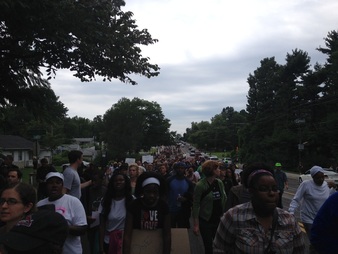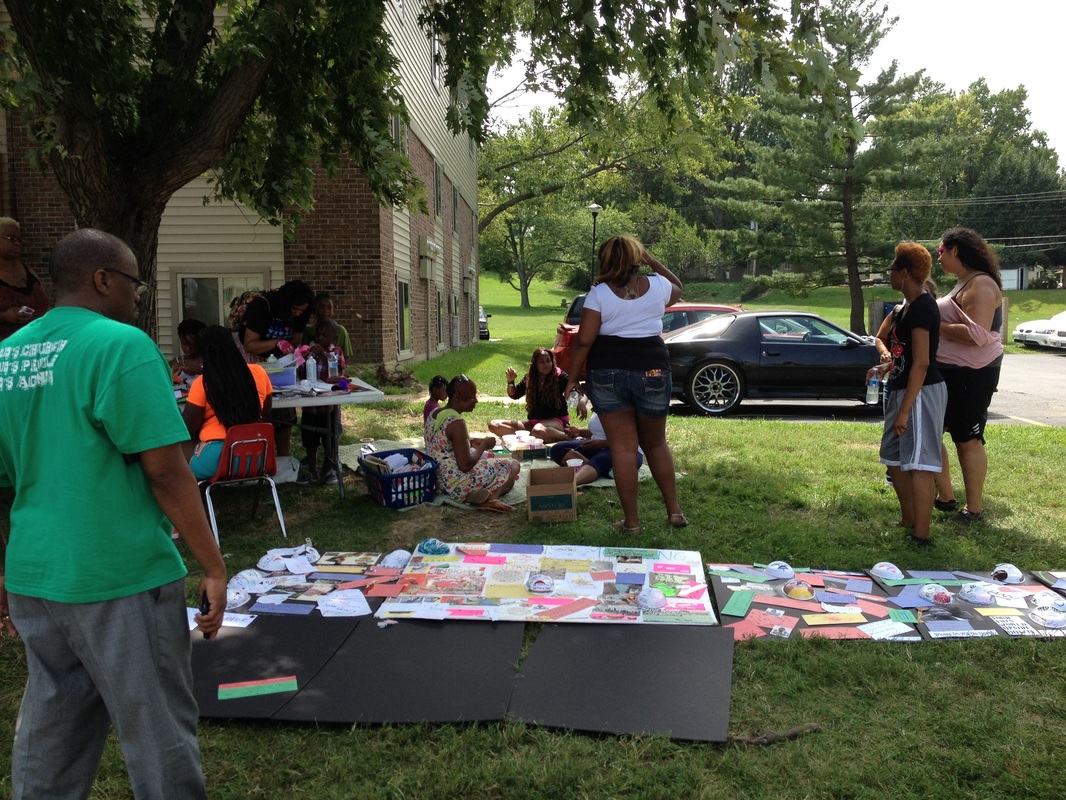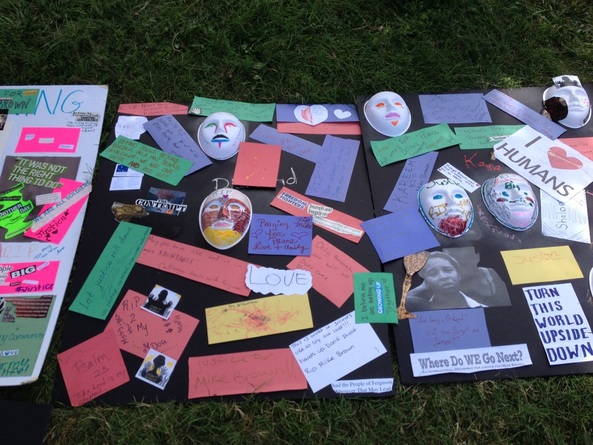Arriving to now, tomorrow I'll go out to Canfield Green and sing with Celia and the Footbeat.
This all still feels like one huge work in progress, this is a movement. I feel torn by my time about being present in Ferguson and then actually doing this same work in all the communities I participate in, I want to be confident about having difficult conversations and confronting systemic racism. While working preserving one of the story wall pieces at my studio I came across a business card for Non Violent Protest principals and this one stuck with me and this is what I'm going forward with today: don't attack racist people, attack racist systems. Kirkwood/Meacham Park and Ferguson/Canfield Green, it overlaps some of same issues at the heart of Elegy to Connie are unmasking themselves in Ferguson.
I leave you with this article from Time.
In February 2008, Charles Lee “Cookie” Thornton, a lifelong African American resident of the suburb of Kirkwood, murdered Kirkwood’s mayor (who died several months later), a police sergeant, a mayoral candidate and two other citizens at a city council meeting, an act that must rate among the most horrendous political assassinations in American history. Thornton was killed by police. He was clearly deranged, but what drove him crazy was his sense of betrayal at the hands of white Kirkwood. Thornton had grown up in the all-African American Meachum Park area of Kirkwood, was a rabid supporter of Kirkwood’s 1991 annexation of Meachum Park, and was, if anything, for a time, an emblem of crossing St. Louis’s racial divide.
Many of Thornton’s demons were imaginary. Yet his unhappiness, his disappointment that the racial divide within the suburbs was impossible to transcend is felt by many African American. So, Thornton, in his brother’s words, “went to war.” And so has, it now seems, a portion of African American St. Louis, triggered by a particular outrage, but largely an expression of rage against a particular set of enduring arrangements. Perhaps the problem with race relations is that the more things change, the more they remain the same
This all still feels like one huge work in progress, this is a movement. I feel torn by my time about being present in Ferguson and then actually doing this same work in all the communities I participate in, I want to be confident about having difficult conversations and confronting systemic racism. While working preserving one of the story wall pieces at my studio I came across a business card for Non Violent Protest principals and this one stuck with me and this is what I'm going forward with today: don't attack racist people, attack racist systems. Kirkwood/Meacham Park and Ferguson/Canfield Green, it overlaps some of same issues at the heart of Elegy to Connie are unmasking themselves in Ferguson.
I leave you with this article from Time.
In February 2008, Charles Lee “Cookie” Thornton, a lifelong African American resident of the suburb of Kirkwood, murdered Kirkwood’s mayor (who died several months later), a police sergeant, a mayoral candidate and two other citizens at a city council meeting, an act that must rate among the most horrendous political assassinations in American history. Thornton was killed by police. He was clearly deranged, but what drove him crazy was his sense of betrayal at the hands of white Kirkwood. Thornton had grown up in the all-African American Meachum Park area of Kirkwood, was a rabid supporter of Kirkwood’s 1991 annexation of Meachum Park, and was, if anything, for a time, an emblem of crossing St. Louis’s racial divide.
Many of Thornton’s demons were imaginary. Yet his unhappiness, his disappointment that the racial divide within the suburbs was impossible to transcend is felt by many African American. So, Thornton, in his brother’s words, “went to war.” And so has, it now seems, a portion of African American St. Louis, triggered by a particular outrage, but largely an expression of rage against a particular set of enduring arrangements. Perhaps the problem with race relations is that the more things change, the more they remain the same



 RSS Feed
RSS Feed
